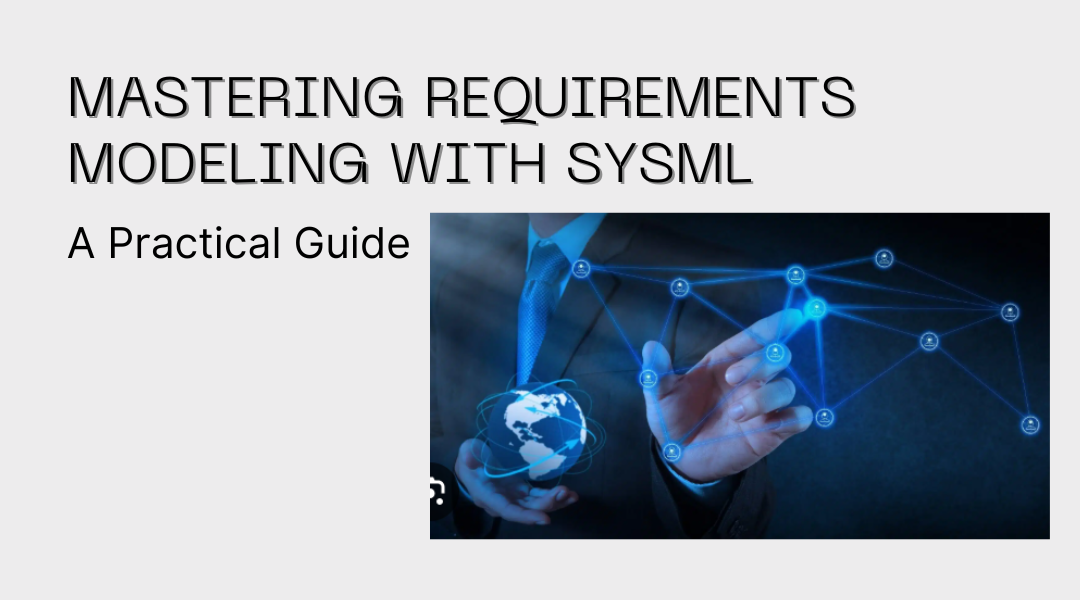Ever worked on a project where vague requirements led to costly redesigns? Or struggled to prove that your system actually meets every customer demand? That’s where SysML’s Requirements Diagrams come in—a game-changer for engineers who need precision, traceability, and clarity in system development.
Unlike static text documents buried in folders, SysML treats requirements as dynamic, interconnected elements in a system model. This means you can visually map how high-level goals trickle down to specific components, tests, and performance benchmarks. Let’s break down how this works in practice.
Why Text Documents Aren’t Enough
Traditional requirements often live in spreadsheets or Word files—disconnected from the actual design. The result? Misinterpretations, overlooked dependencies, and last-minute scrambles to prove compliance.
SysML flips this by embedding requirements directly into the system model. Imagine:
- Clicking a requirement and instantly seeing which software module fulfills it.
- Tracing a safety regulation all the way to its validation test.
- Spotting gaps early because the model highlights untraceable specs.
This isn’t just organization—it’s accountability built into the design process.
Anatomy of a SysML Requirements Diagram
1. The Building Blocks
- Requirement Elements: Think of these as smart sticky notes. Each has:
- ID (e.g., SYS-203)
- Description (e.g., “The drone must sustain winds up to 25 mph”)
- Metadata (priority, risk, verification method).
- Relationships: The real magic. For example:
- Derive: A high-level req (“The app must be secure”) splits into detailed ones (*”User data encrypted via AES-256″*).
- Satisfy: Links a requirement to the component that makes it happen (e.g., *”Battery module satisfies 8-hour runtime req”*).
- Verify: Ties a requirement to its test (e.g., *”Thermal test V-101 confirms no overheating”*).
2. Organizing Complexity
Large systems need hierarchies. A spacecraft might have:
- Top Tier: “Mission: Deliver payload to orbit.”
- Sub-Requirement: “Thrusters must provide 500 kN force.”
- Component-Level: “Fuel valve design ensures precise flow control.”
With SysML, you collapse or expand these layers like an interactive outline.
Real-World Example: Smart Thermostat
Let’s model requirements for a smart thermostat:
- User Need: “Reduce energy bills by 20%.”
- Derives → “Learn household patterns in ≤7 days.”
- Satisfied by → Machine learning block in software.
- Verified by → Field test comparing energy usage.
- Safety Requirement: “No overheating risk.”
- Refined by → “Shut off if internal temp >70°C.”
- Satisfied by → Thermal fuse hardware.
- Regulatory: “Comply with IEC 60730 (safety standards).”
- Traced to → Certification test report.
This model prevents the classic “Oops, we forgot the safety shutoff” moment.
Pro Tips for Effective Modeling
- Start with Stakeholders
- Interview users, regulators, and engineers. “What keeps you up at night?” uncovers hidden requirements.
- Use Tags Wisely
- Label requirements as “High Risk”, “Customer-Facing”, or “Legacy Compliance” to prioritize work.
- Sync with Design Early
- If a requirement can’t link to a block, activity, or test, it’s a red flag. Fix it before prototyping.
- Leverage Tools
- Plug-ins for DOORS or Jama Connect can auto-generate traceability matrices from SysML.
When Requirements Modeling Pays Off
- Medical Devices: Proving FDA compliance is easier when every regulation maps to a design feature.
- Autonomous Vehicles: Untraceable safety reqs = liability nightmares.
- Consumer Electronics: Missing a “water-resistant” spec could mean millions in recalls.
Final Thought
SysML’s Requirements Diagrams turn nebulous “shall statements” into a living, traceable blueprint. It’s not just documentation—it’s your system’s DNA, ensuring every piece connects back to a validated need.
“A requirement untraced is a risk undiscovered.”
Try this: Open your latest project. How many requirements can’t you trace to a test or component? If the answer isn’t zero, it’s time to model.
